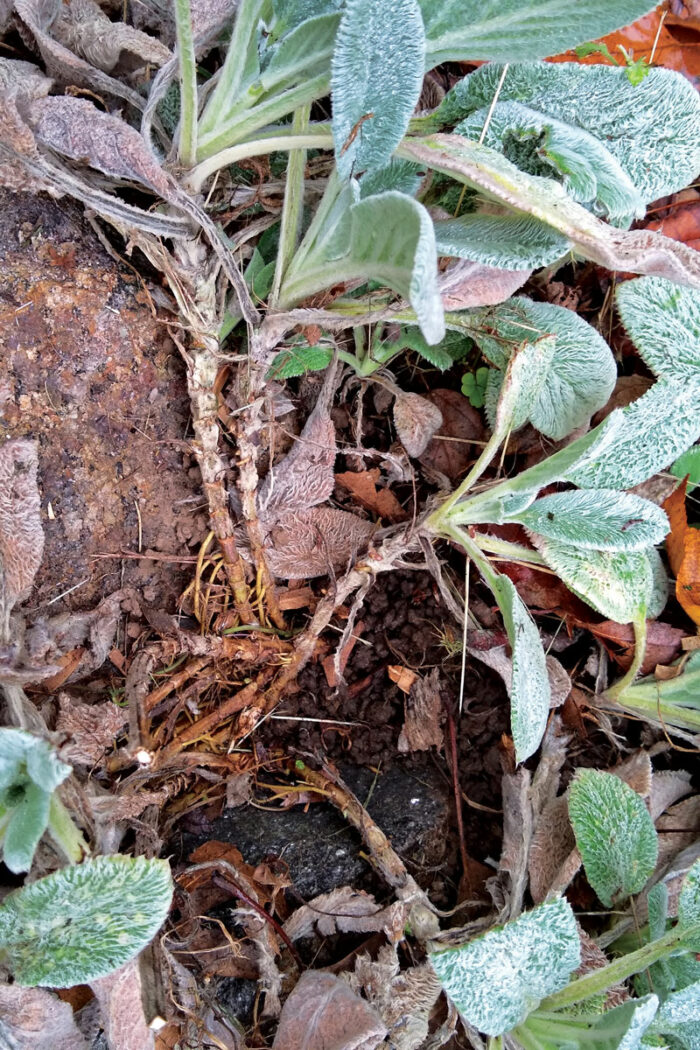
Lambs’ ears and betonies are easy to grow in full sun to light shade in well-drained soil, but betonies like the soil consistently moist, and lambs’ ears prefer it on the dry side. Their hardiness range spans from Zone 4 through Zone 8. These plants do have their quirks, however, like all plants. See the results from the Chicago Botanic Garden’s recent trial on lambs’ ears and betony.
-

Photo: Danielle Sherry Moisture. Wet soil in summer and winter, high humidity, and moisture on the fuzzy leaves (avoid overhead irrigation) can cause root rot, fungal leaf spot, powdery mildew, crown melt out, or death in lambs’ ears.
- Pruning. Lambs’ ears are technically evergreen but may look the worse for wear after winter. Cut away winter-damaged leaves in spring.
- Pests. Lambs’ ears and betonies are generally resistant to deer and rabbit browsing.
- Deadheading. Removing the spent blossoms of lambs’ ears improves the appearance and keeps plants healthy. Whether to remove the spent blossoms of betonies really depends on the gardener’s aesthetic, but deadheading will prevent reseeding, which can be profuse. Cut back stems to the crown of the plant (above) to prevent an unsightly appearance.
- Division. The creeping stems of lambs’ ears root down as they spread outward, which results in open and unsightly centers (below). Dividing them every two or three years will rejuvenate the plants. In fall or spring, separate the healthy shoots from the bare woody crown, and replant them.
Betonies spread by slowly creeping stolons, which root down as they grow. Divide betonies in spring as needed, every four to five years.
 Invasive alert
Invasive alert
Marsh hedgenettle (Stachys palustris) was removed from the trial after two years due to its aggressive running habit. It was mild-mannered the first summer but sprouted throughout the test plot and into surrounding turf the following spring. This plant is probably best left to its preferred habitat in soggy landscapes, such as moist meadows, marshes, swales, and roadside ditches.
Richard Hawke is plant evaluation manager at the Chicago Botanic Garden in Glencoe, Illinois.

















Comments
Log in or create an account to post a comment.
Sign up Log in